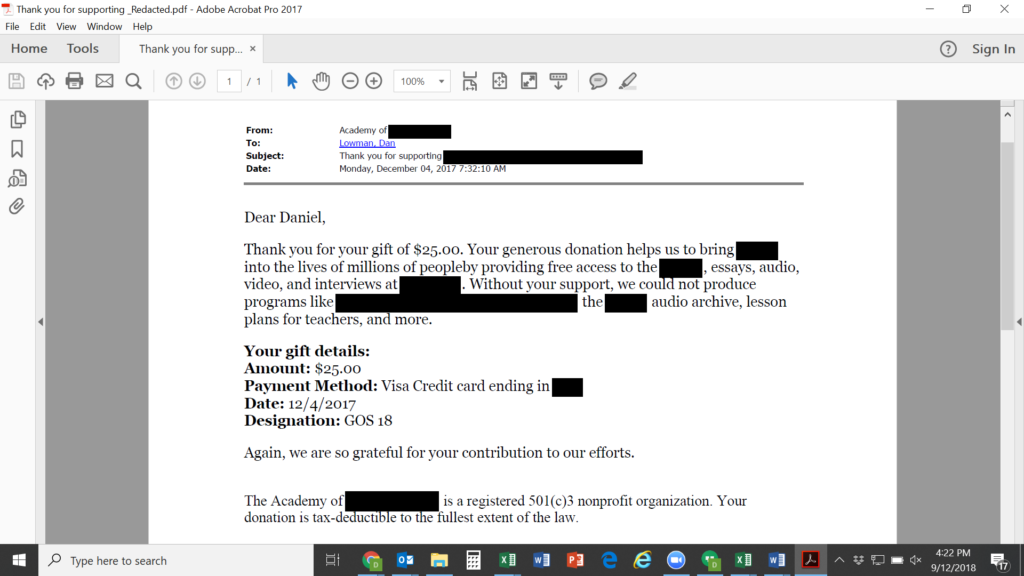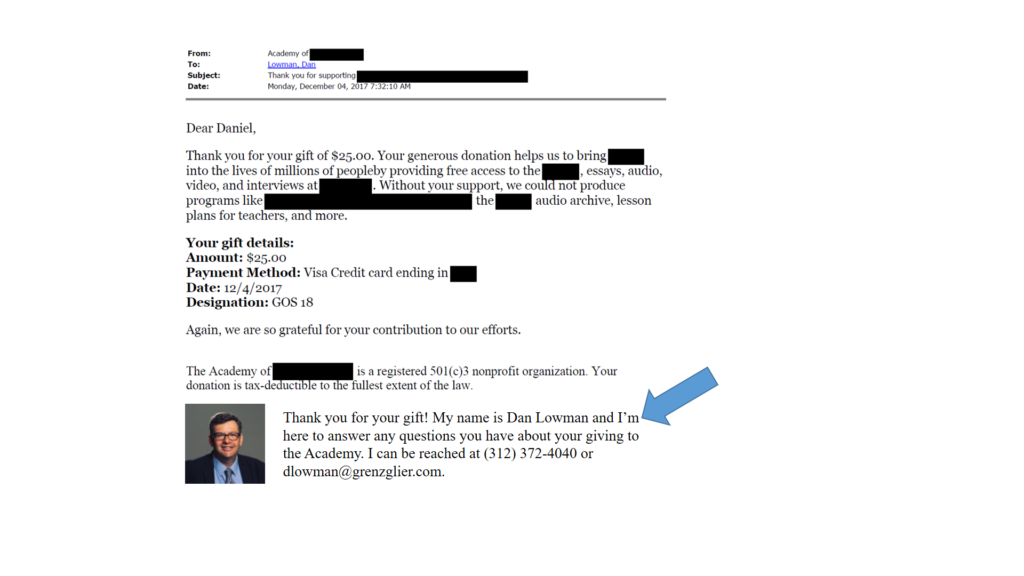by
GG+A’s Survey Lab has developed a Donor Experience Scorecard that is designed to help organizations understand where they do well—and where they don’t—at various points in the donor lifecycle. By responding to a series of 10 statements, donors can provide direct feedback about their experience. By analyzing these results across dozens of organizations with donors who have completed the survey, we can identify trends and issues, some of which have fairly easy remedies.
Whom to Contact: “Clear as Mud”
One of the statements is “It is clear to me whom to contact if I have a question about my giving.” This seemingly simple function of the stewardship program proves to be vexing for many organizations. In fact, nearly half of donors, on average, say they don’t know whom to contact, and another 22% say they are only somewhat clear on the answer to this question.
| Know Whom to Contact | ||
| Unclear | Somewhat Clear | Clear |
| 47% | 22% | 31% |
Looking at organization types, higher education tends to score better than arts/culture organizations and healthcare. Independent schools tend to have the highest scores overall, but no organization type stands out with especially high scores. Looking at data from three Ivy League universities, still, only 56% of all donors from the previous 12 months said they were clear on whom to contact.
As donor level rises, so does clarity on this issue. Eighty-two percent (82%) of donors who have given $50,000 or more in the last year answer that they are clear on whom to contact—but that leaves 18% (1 in 6) of those significant donors without a good answer to their question about whom to contact.
Two comments from major donor ($50,000+) respondents who said they were unclear:
“The Dean asked me for my gift, but I feel like she’s not the person to help me with a tax-receipt issue. I guess I don’t know.”
“The person from development left and that was it.”
Donors of less than $1,000 are the least likely to be clear on whom to contact, with more than 60% answering that they are unclear.
A $500 donor commented:
“The note I got was from donorrelations@[name].edu. You’ve got my name. Why can’t I get yours?”
Last year I made a small gift to an organization and got this email:

It certainly does not answer the question of whom I can contact. It came from a ‘no-reply’ email box, and there is no phone number. Any questions I might have would require a visit to their website and hunting from there.
What You Can Do
The goal of stewardship, ultimately, is to make donors feel cared-for. Even donors who don’t need to contact you will notice the personalization, and it makes your thank-you seem more genuine. For higher-level donors, part of this includes a prospect management process that ensures timely and ongoing follow-up with donors, even if their development liaison has left the organization—the details of that are best left to their own article.
But for donors at any level, some very simple fixes can go a long way. Try not to use “no-reply” addresses, so at least the reply button will go to someone in your organization. At a minimum, have some contact information on the receipt, confirmation email, and thank-you communications. (Having a letter signed by a leader or a student is great—and good practice, but it’s insufficient. You still need to have an appropriate development contact for questions or other communications.)
Better still, make it about a real human. What if my example letter above looked like this:

It’s a little thing, and very easy to implement. The percentage of donors who say it is clear whom to contact will jump immediately. And most importantly, your donors deserve it.
